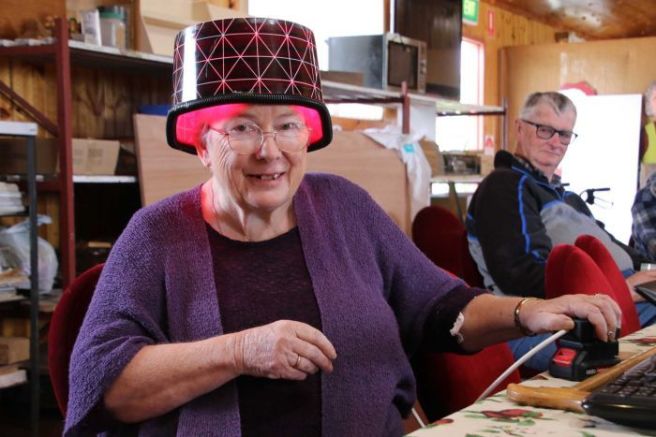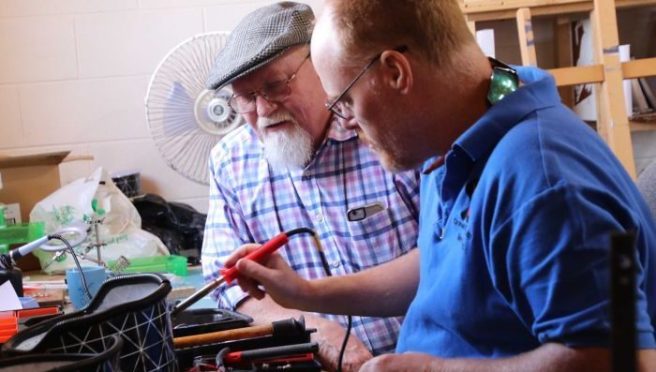|
NOTE: The information in today’s post should not be considered an endorsement of PhotoPharmics or the treatment they are proposing. The author of this blog has had no communication with the company. The information in this post is provided because the author has been asked by readers to discuss it. In October 2018, at the annual International Movement Disorders Society meeting in Hong Kong, a small biotech firm called “PhotoPharmic” presented a poster entitled “Double-blind controlled trial of Spectramax™ light therapy for the treatment of Parkinson’s disease patients on stable dopaminergic therapy.” In the poster provided the results of a study in which 45 participants with Parkinson’s were blindly treated with light therapy for 1 hour each evening over the course of 6 months. At the end of the study, the investigators found clinically meaningful improvements in the MDS-UPSDRS rating scale, as well as significant improvements in non-motor measures. In today’s post, we will discuss what light therapy is, what this study found, and look at what PhotoPharmic plan to do next.
|
 The Tasmanian “light bucket” for Parkinson’s. Source: ABC
The Tasmanian “light bucket” for Parkinson’s. Source: ABC
It might come as a bit of a surprise to some readers, but one of my favourite stories of 2019 from the world of Parkinson’s research originates from Tasmania.
It is a tale that involves a group of Australian Parkinson’s advocates who somehow cottened on to a seemingly inconceivable idea (treating oneself with a homemade light bucket). But their project was embraced by the local Tasmanian community which is helping out with the research, for example the Dorset community men’s shed is helping to make the light buckets.
 The Dorset community men’s shed helps to make the buckets. Source: ABC
The Dorset community men’s shed helps to make the buckets. Source: ABC
And whatsmore they have inspired an Australia-wide “proof-of-concept” clinical trial on the topic.
The trial is being conducted by The University of Sydney School of Medicine and Parkinson’s South Australia. There is also a website where you can follow the various activities surrounding the trial – Click here to see the website.
 Designing the helmet for the Sydney clinical trials. Source: ABC
Designing the helmet for the Sydney clinical trials. Source: ABC
And there is already published research coming out of the clinical study:
 Title: “Buckets”: Early Observations on the Use of Red and Infrared Light Helmets in Parkinson’s Disease Patients.
Title: “Buckets”: Early Observations on the Use of Red and Infrared Light Helmets in Parkinson’s Disease Patients.
Authors: Hamilton CL, El Khoury H, Hamilton D, Nicklason F, Mitrofanis J.
Journal: Photobiomodul Photomed Laser Surg. 2019 Oct;37(10):615-622.
PMID: 31536464
Now to be clear, I do fully not understand the biology behind the idea, and it would be easy for me to make fun of this whole situation. But I really do love this story. The ivory towers of industry and academic research may scoff at such a story, but I hope that this study will lead to something new and wonderful (the way Joy Milne’s “smell of Parkinson’s” has opened new areas of research – click here to read a previous SoPD post about that).
The light bucket “photobiomodulation” clinical trial for Parkinson’s is a great story about the DIY attitude, community sharing/helping, curiosity & some serious left field thinking (Click here to read a prominent newspaper story about this).
Photobiomodulation? Are you serious? How on Earth can LIGHT help with Parkinson’s?


























